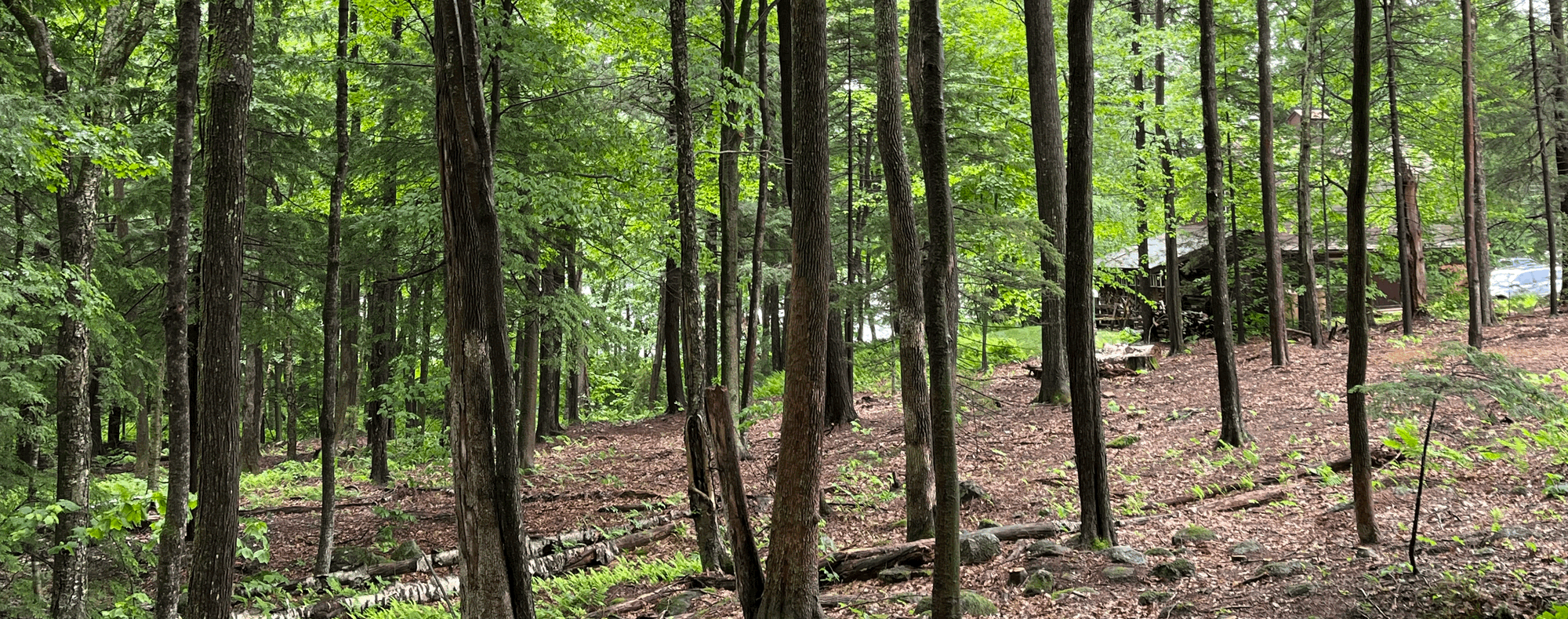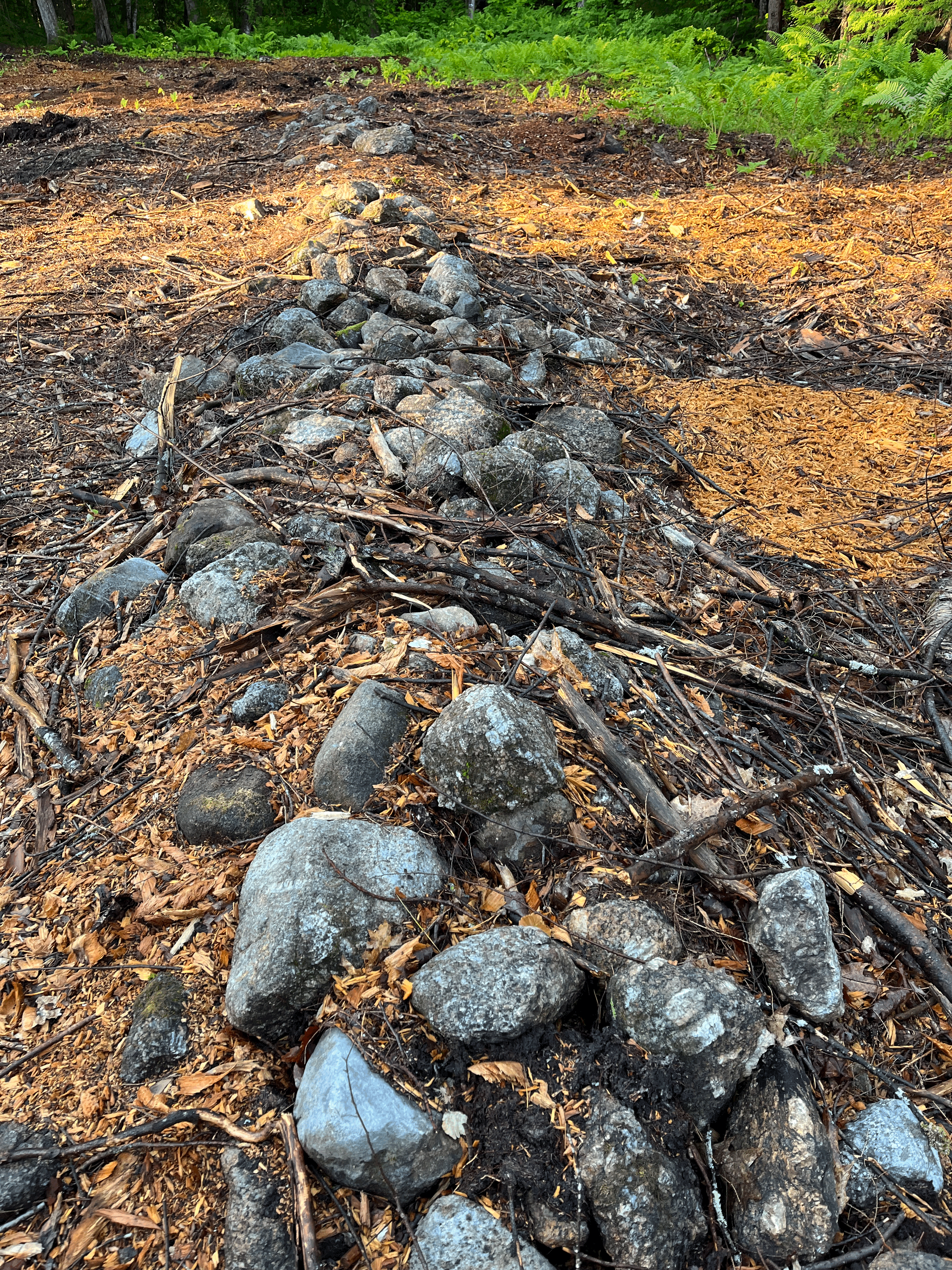Sexy Woods
Ask me to choose between autumn colors and stonewalls, and I will choose the walls. They tell stories.

Swifty Corwin was here last month with his forestry equipment and crew to clear about an acre of our land for vegetable gardens and a small meadow, and thin other portions by removing the understory of smaller trees and saplings. This second part is called “glading,” as in creating a forest glade. In the UK, they call it woodland pasture or parkland. Swifty calls it “sexy woods.”
From start to finish, it took three days. There were chainsaws, a tractor, a chipper capable of devouring whole trees, a truck with high walls designed for hauling the woods chips, a stump grinder, and a remarkable machine called a skidder, which moves around the forest on treads, piloted by someone standing on a lip at the back, operating a hydraulic arm with a steel claw that can lift bundles of lumber and feed them into the chipper.
It is hard to go off and do something else in the presence of such excitement. It is equally hard not to meditate on how clearing the land was accomplished 200 years ago - when whole mountainsides were being cut down! The answer was likely draft horses, the skidders of the day, and teams of people. But, otherwise, to pull up to a neck in the woods back then, in a wagon with your family aboard, and the need to start farming to feed yourselves - with one or two axes, a saw, a chain, a horse? It had to have meant chopping, sawing, and clearing every day for weeks leading into months.
Whenever we hear a chainsaw in the woods around us, we think, “Wonder who is working on what?” And then, “Wonder how long it will go on?” We are especially conscious in reverse when the sound of the saw is of our own doing because all of us are reluctant to disturb the peace around here. Back in the day, though, the chopping and sawing must have been relentless. After all, as a new nation, we cleared the land to the Mississippi. Chop, chop, chop. Saw, saw, saw. The sight of horses dragging timber through town must have been a constant. One of our local foresters has explained that the lack of right-angled intersections in the town is the result of roads that were placed over the byways created by horses pulling trees behind them. The horses veered with their burdens right or left. They did not make sharp turns.
These meditations were rewarded by the remnants of a stone wall that Swifty’s work revealed in the middle of our cleared space. As many times as we had walked the woods ahead of the project, envisioning outcomes and discussing boundaries, we had never noticed the pile of rocks for what it was, an archeological reminder of our intrepid forebearers. I think New England’s stonewalls are its most iconic feature. Ask me to choose between autumn colors and stonewalls, and I will choose the walls. They tell stories. We plan to pile the stones again and set a picnic table nearby, inviting more stories.

A creek separates and runs along two sides of the clearing. A few mornings ago, a bear was foraging along one branch, enjoying a cool drink of water. We have four different habitats now on our slice of land for our forest-dwelling neighbors, such as the bear: the pond, the portion of deep woods we leave unmolested, the glade, and the cleared field. There is also the lawn around the cabin, which is home to bugs and insects, toads, and garter snakes, some of which must slither for their life during the summer when the lawn mower goes by.
The challenge will be sharing the vegetable garden with these neighbors. We will have to erect a fence, which will need to be maintained, and, frankly, is never so nice a thing to look at. My father was always of the view to leave out the fence and grow enough for everyone, specifically as regarded corn. But he was mostly a suburban gardener. We can experiment with his sort of largesse, but we are greatly outnumbered. And we don’t know to what extent bears like vegetables in the way they like birdseed or blueberries (we have blueberries that grow wild). We do know they have little regard for fences.
Right now, we are waiting for our next partner in this field-clearing process to come with his machines to spread out the wood chips Swifty’s crew left behind and cover it all with loam, which is akin to topsoil. Then we can plant the field grass and erect our raised beds. It will be a year before the thing is substantially up and running and working as part of the whole.
But, already, we anticipate the stories.

